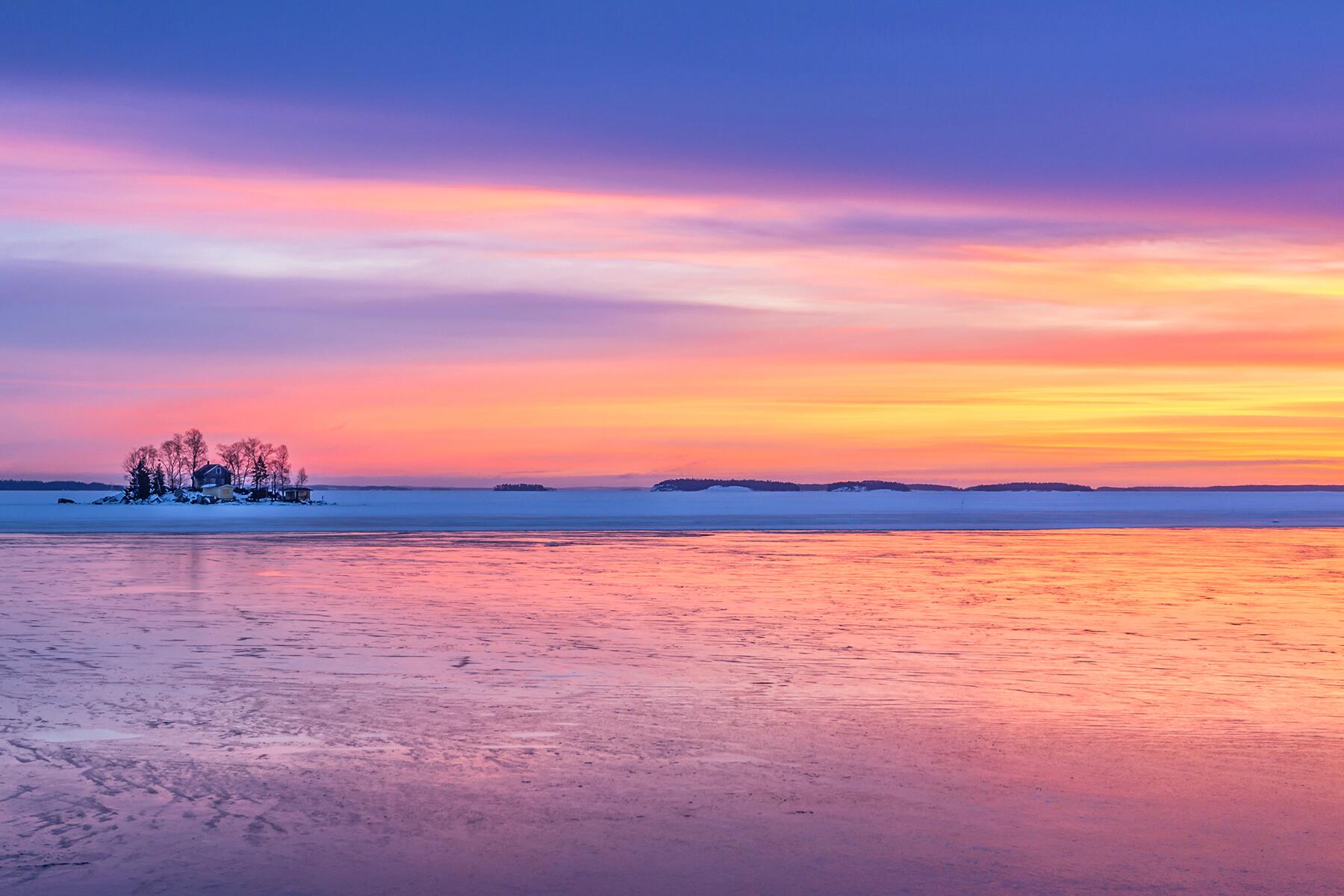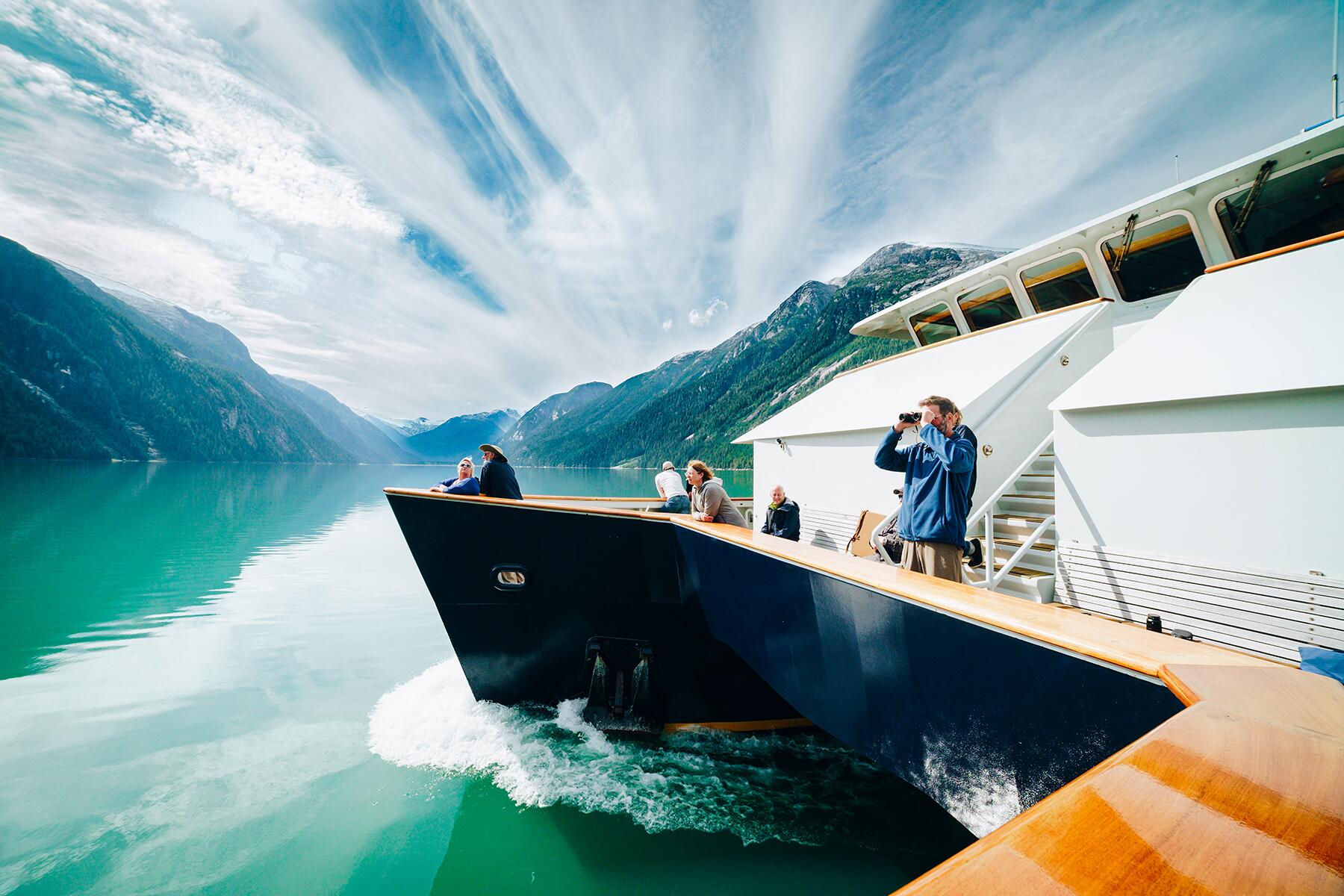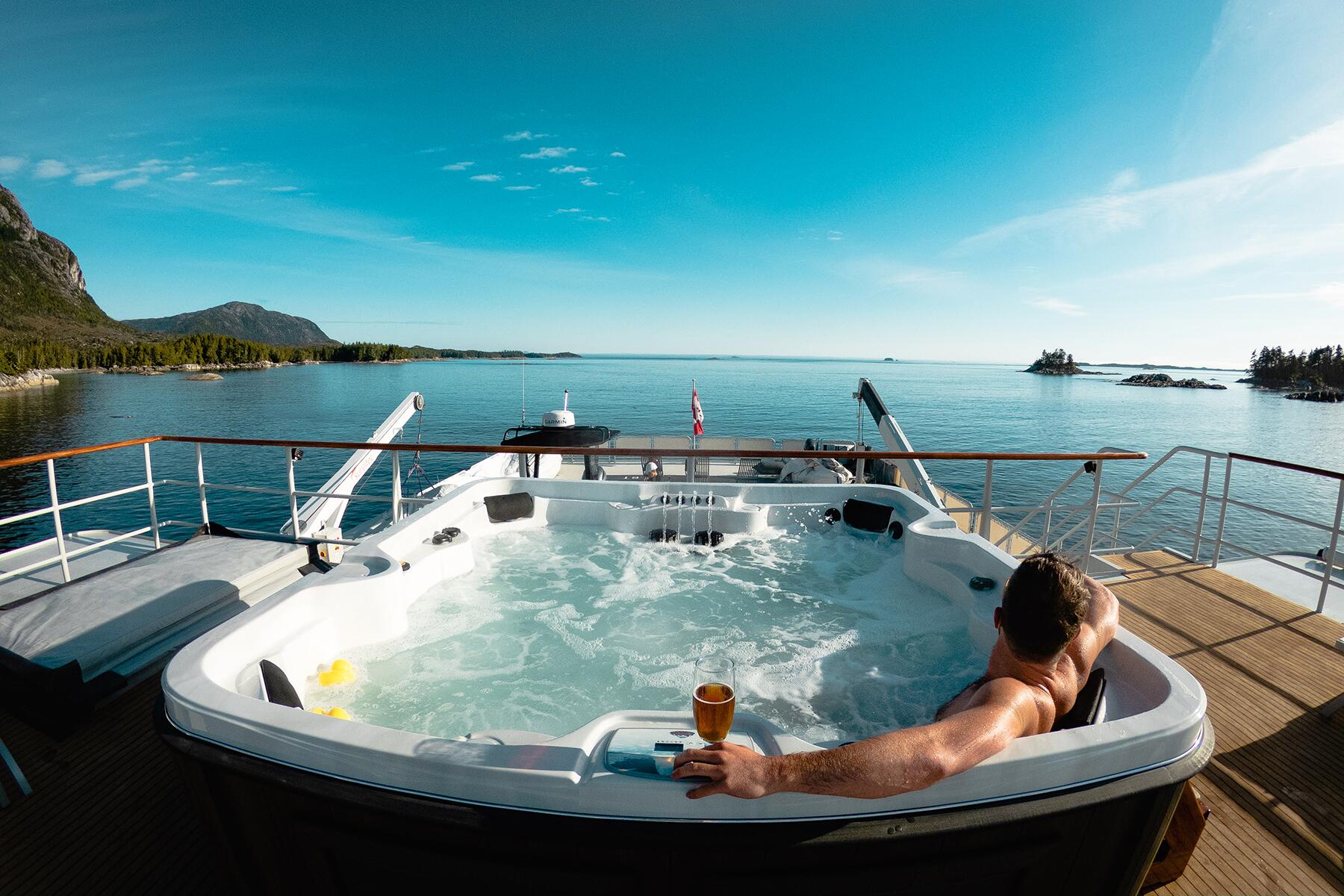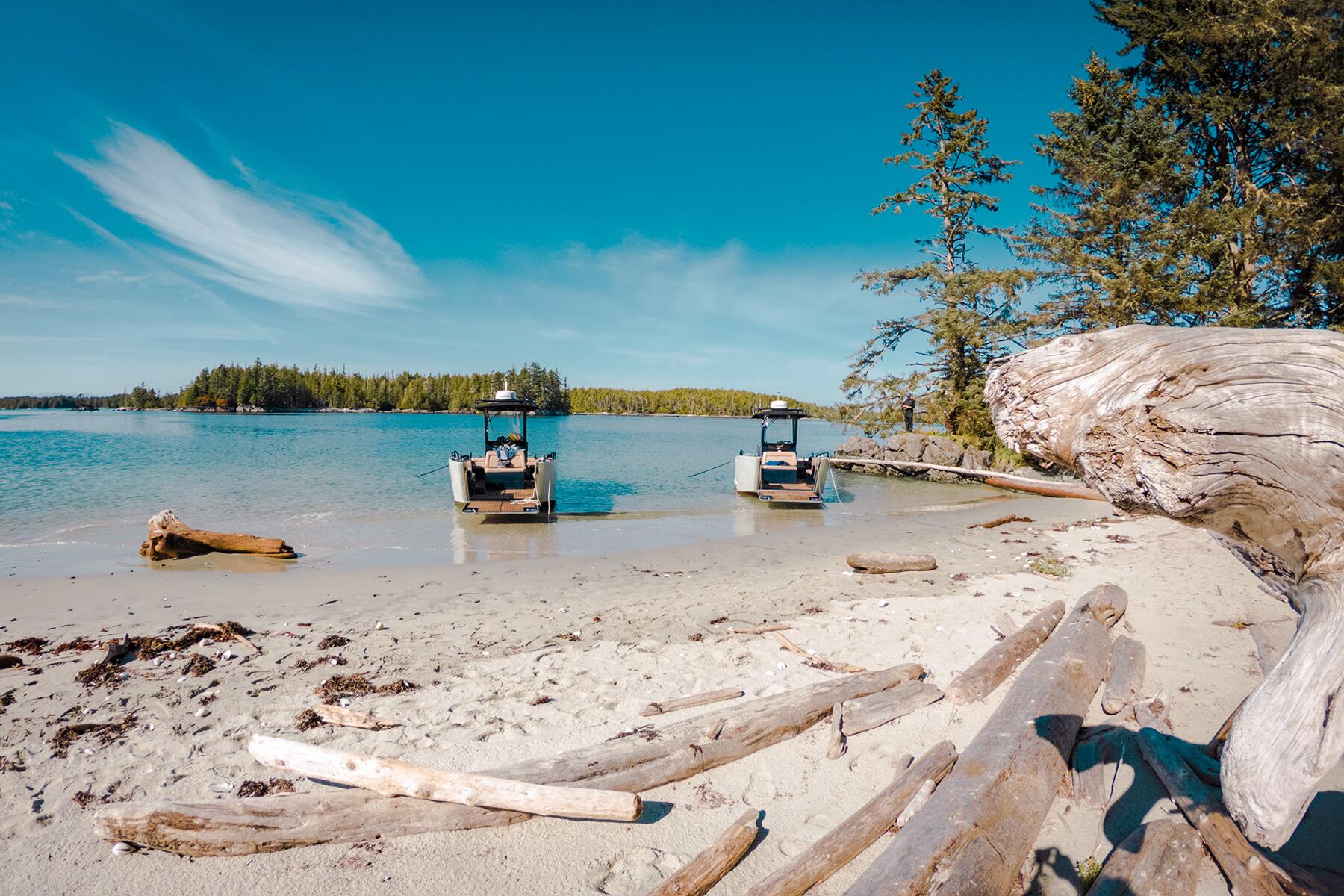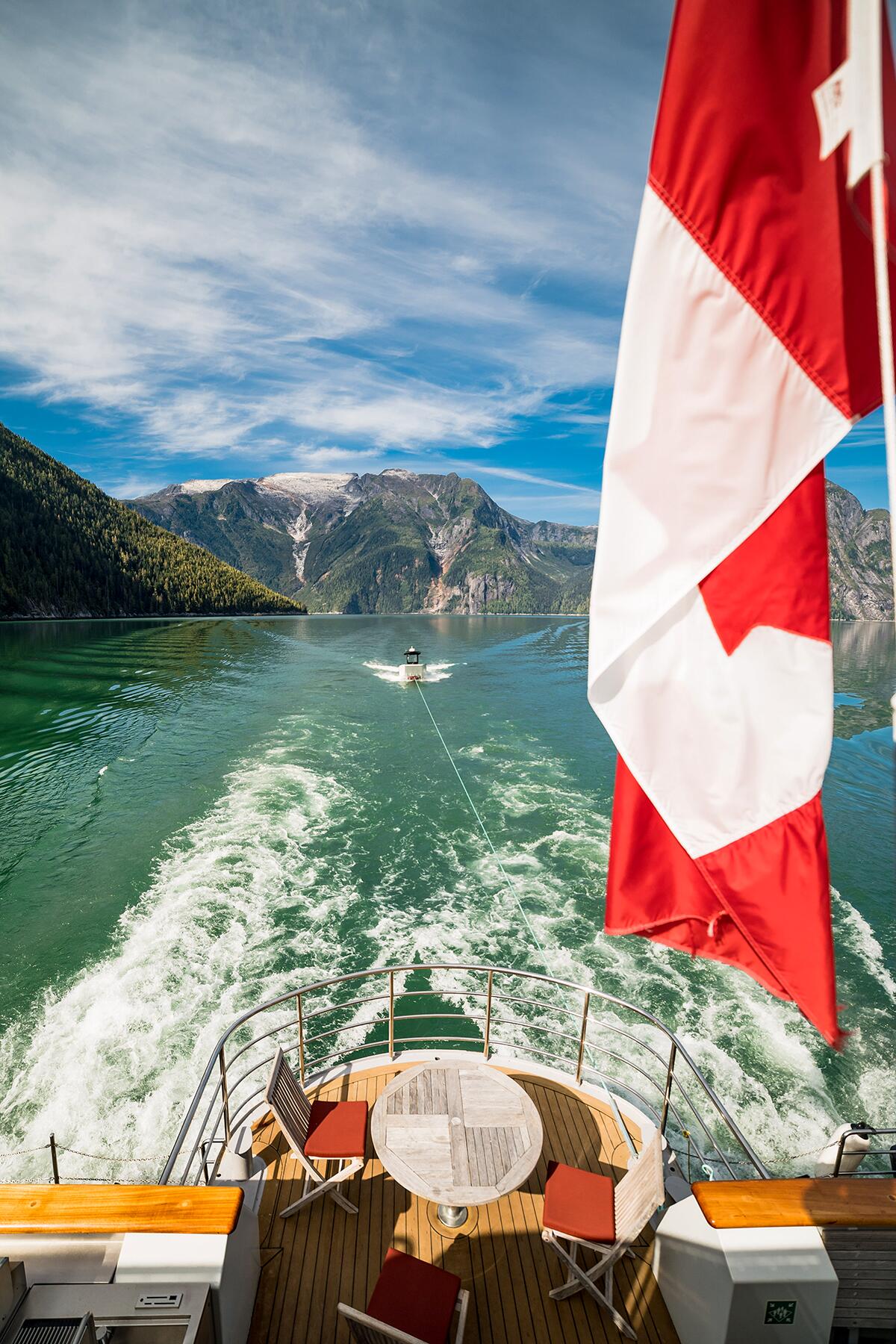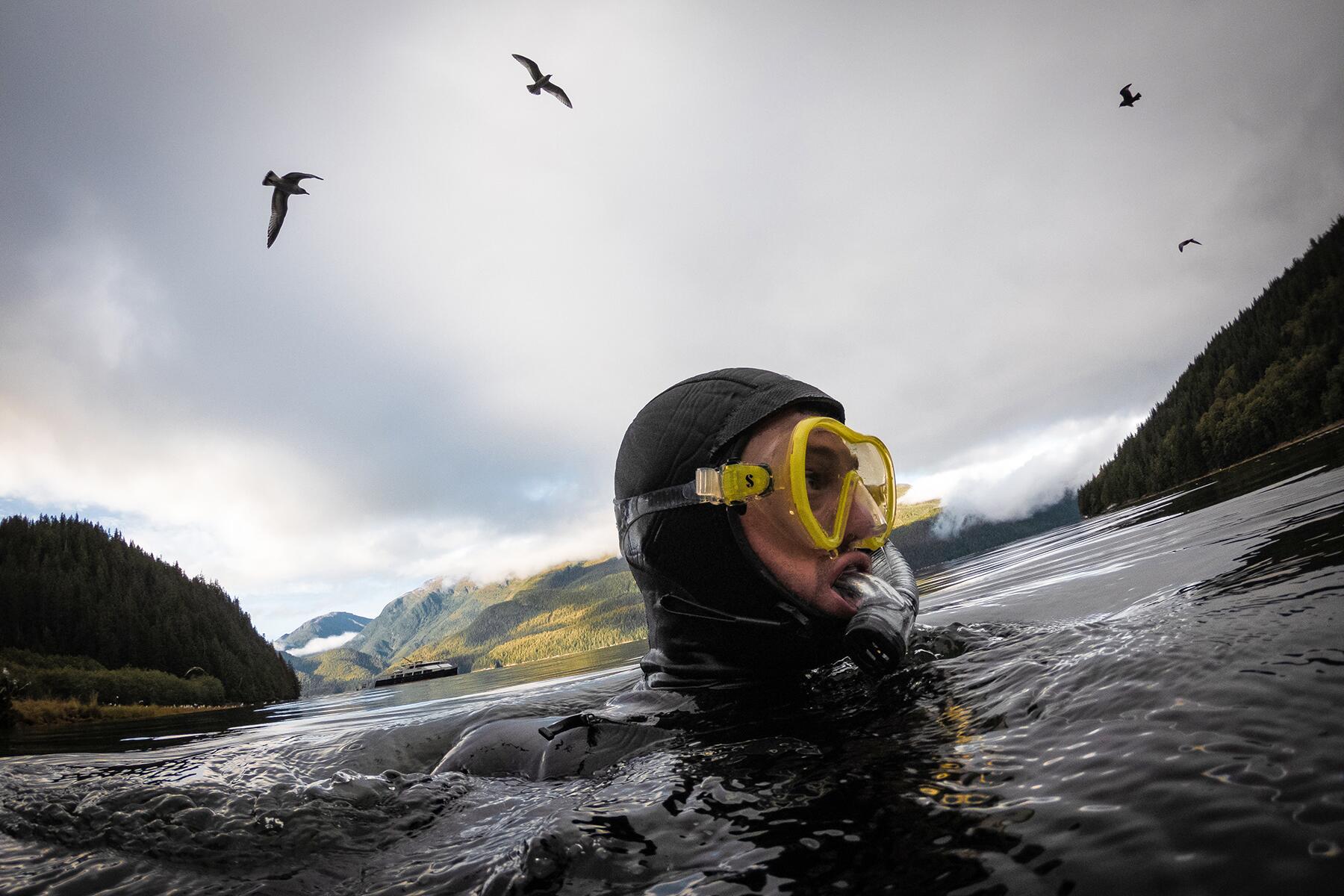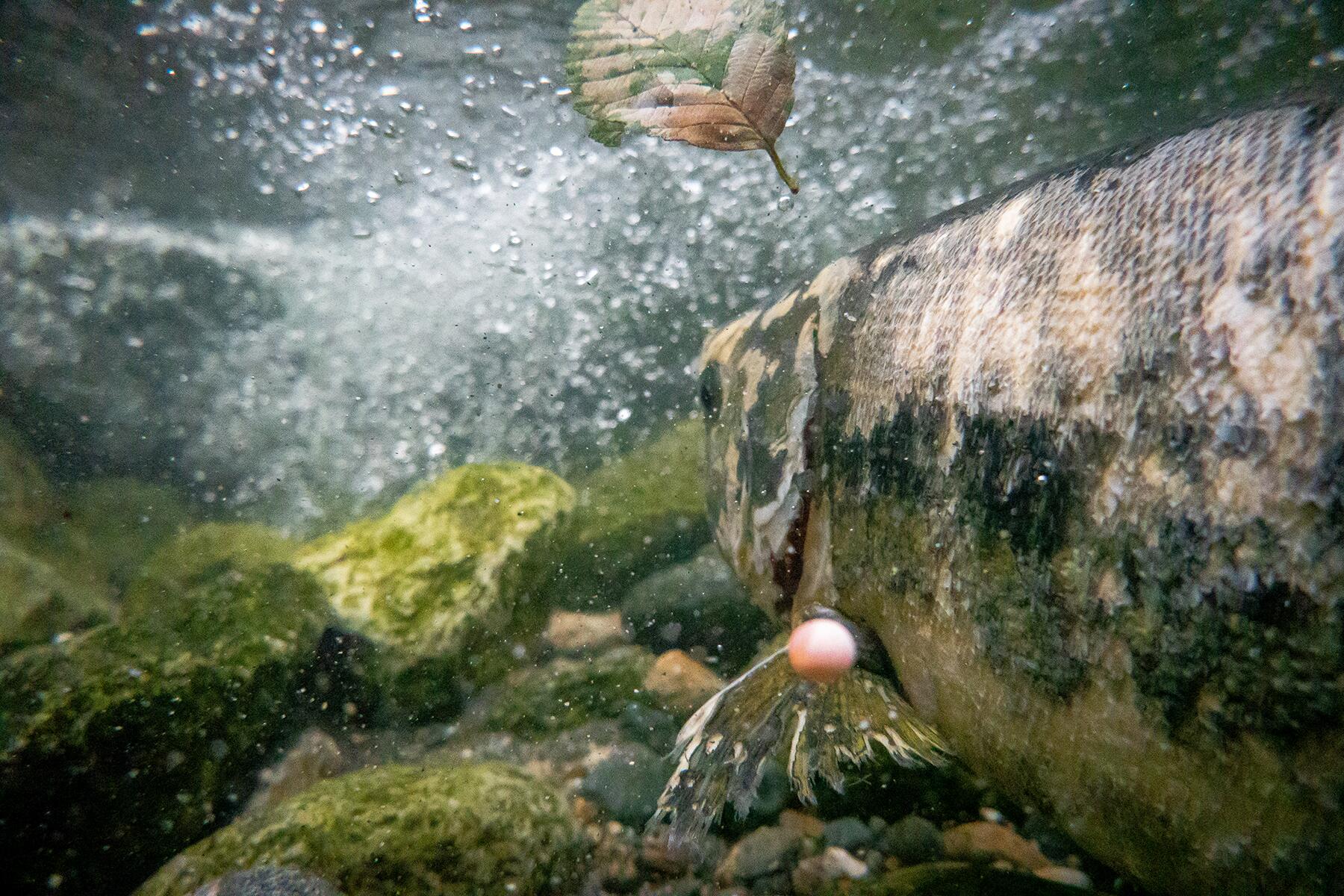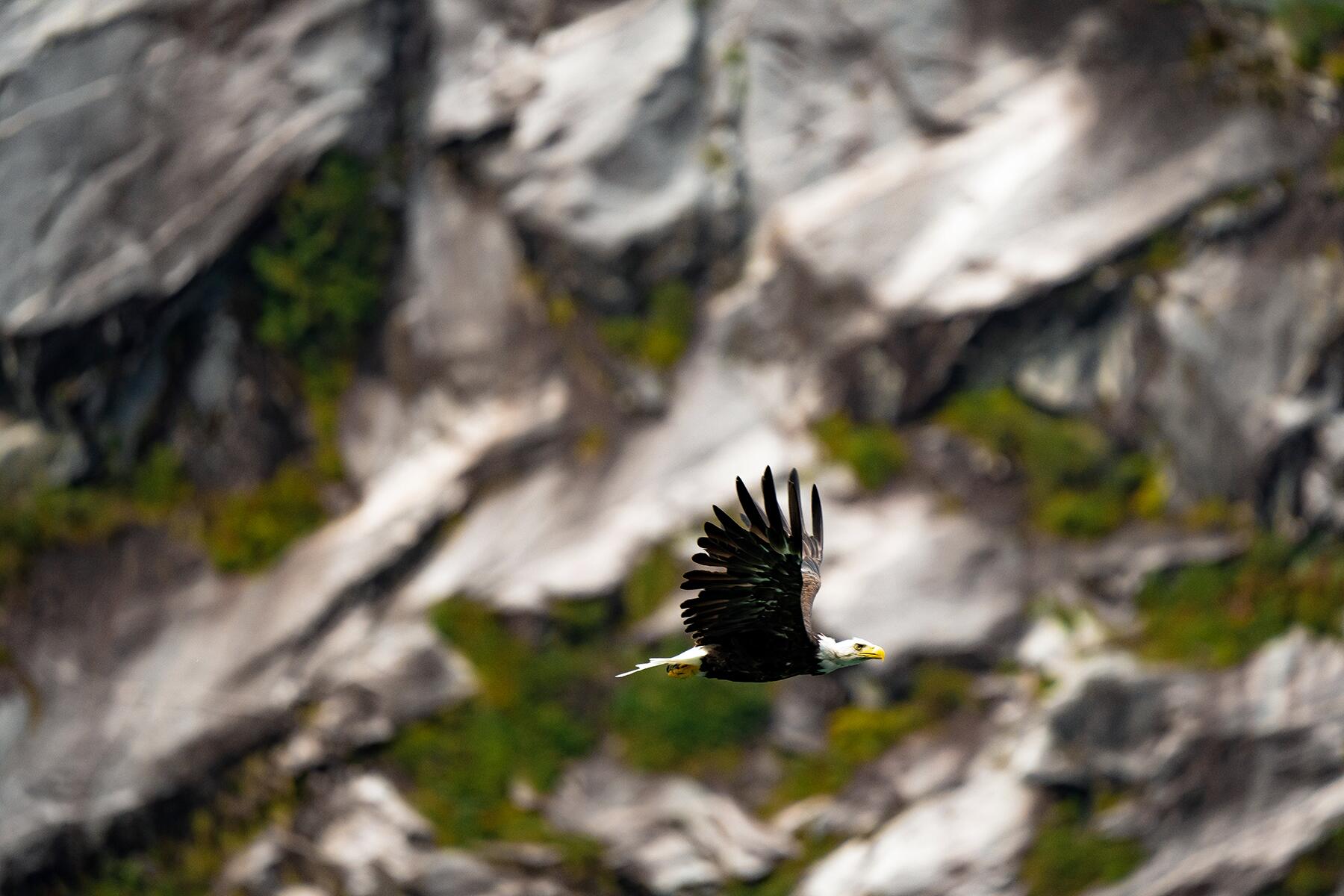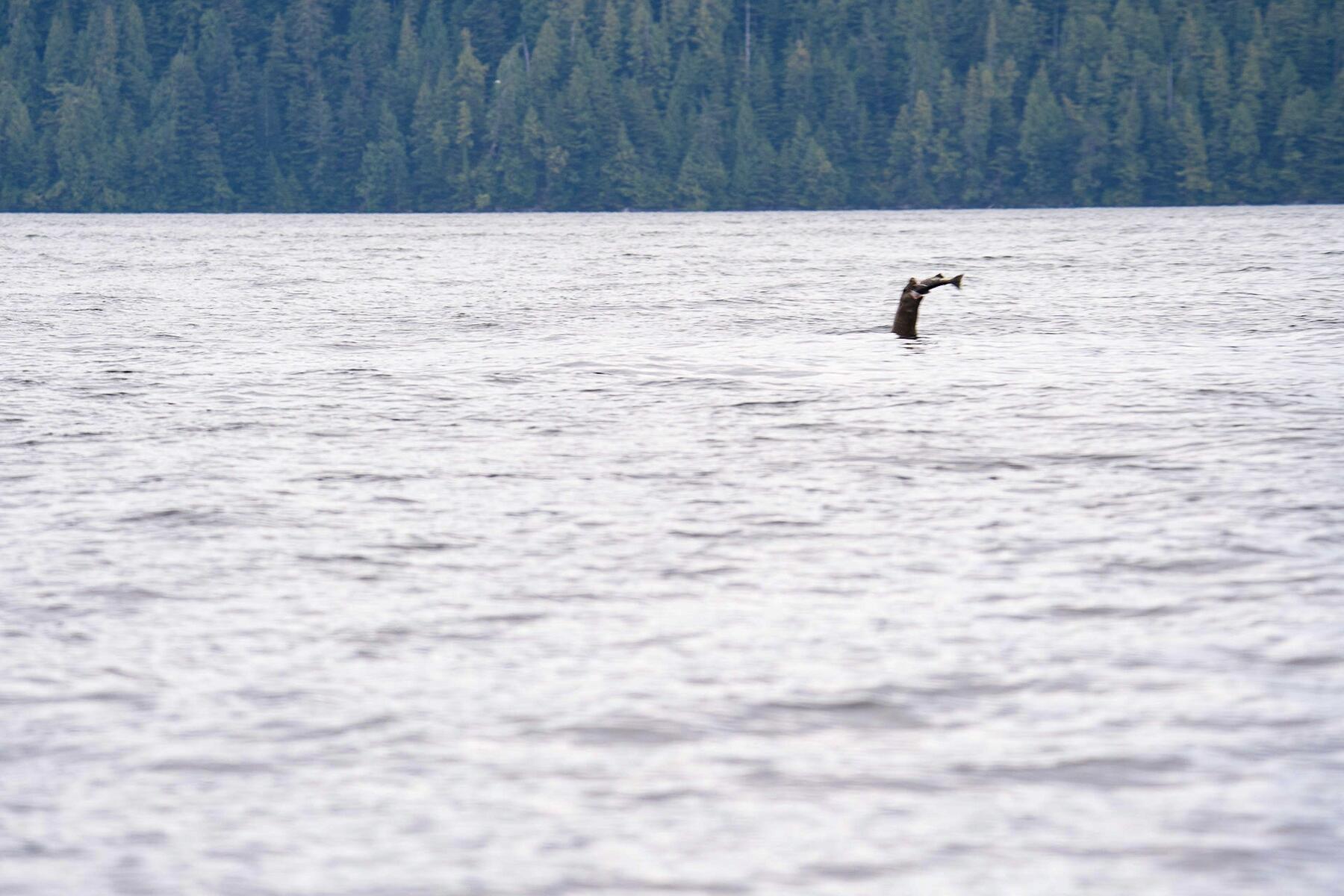Every day we sailed on a magical path that led us to wolves, whales, northern lights, and, eventually, the elusive spirit bear.
C
anada’s Great Bear Rainforest is a gift to the world, a gift that has been cherished and protected by coastal Indigenous communities (member nations include the Wuikinuxv, Heiltsuk, Kitasoo/Xai’xais, Nuxalk, Gitga’at, Gitxaala, Metlakatla, Old Massett, Skidegate, and Council of the Haida Nation) for millennia, and a gift where life on land coexists symbiotically with the life of the sea. The Great Bear Rainforest is the largest coastal temperate rainforest in the world made up of protected old-growth forests, uncharted waters, and wildlife viewing experiences that give African safaris a run for their money. And the best way to see it all? A sustainable small ship expedition with Maple Leaf Adventures.
The new MV Cascadia brings comfort to the coast on a boat built specifically for navigating fjords and uncharted coastlines. She is the only vessel of her kind on Canada’s west coast and brings guests face-to-face with big adventures. Maple Leaf’s fleet of three operates in British Columbia and Alaska. On this particular trip, we ventured to the Great Bear Rainforest in British Columbia’s Cariboo Chilcotin Coast region.
Recommended Fodor’s Video
Comfort on the coast means more than a nice place to rest your head. It’s having a private chef cook up sustainable cuisine, a wine bar with BC’s finest wines, craft beer on tap, and the best hotel room views you’ll ever have. Undoubtedly, the most relaxing place on the ship to watch the scenery go by, as Cascadia navigates glacial fjords and uninhabited islands, is the rooftop hot tub. This is the same place I spotted humpback whales breaching out of the water and breathtaking west coast sunsets, and where mother nature dazzled us with a show at night.
Canada is known for northern lights shows and as the summer turns to fall, it becomes easier to spot them with fewer hours of daylight. Fall also happens to be the best time for bear viewing, and if you’re in search of the spirit bear just as I was, you’ll want to find yourself on a fall expedition between August and October.

The Great Bear Rainforest is inhabited by coastal Indigenous communities who have called these lands and waters home for over 13,000 years. We visit their land only by invitation–invitations granted through years of relationship building and conservation partnerships between Indigenous communities and Maple Leaf Adventures.

The totem is in Chief Cecil Paul’s home territory of the Henaaksiala (pronounced Hen-ak-shela) and Kitlope; its survival story is further explained in his book Stories from the Magic Canoe. The totem is a symbol of both his survival and the largest intact coastal temperate rainforest in the world, which he saved from logging in the 1990s.
Canada’s Indigenous tourism experiences are culturally rich, powerful, and transformational from coast to coast to coast. Places to explore Indigenous experiences in the Great Bear Rainforest and throughout the country can be found with Destination Indigenous.
Finding the rarest bear in the world is one of those experiences that is not about the destination, but instead about the journey itself. The goal is, of course, to find the elusive spirit bear, but the journey consists of places like the Huchsduwachsdu Nuyem Jees/Kitlope Heritage Conservancy, home to the largest expanse of intact coastal temperate rainforest in the world. It is one of Canada’s longest fjords and the turquoise colors come from the summertime glacier and icefield meltwaters. While Norway and New Zealand might come to mind when we think “beautiful fjords”, Canada’s do not disappoint.
The MV Cascadia has custom-made “tenders”, which are small boats that allow guests to get close to nature. These are how we quietly navigated up river estuaries in search of wildlife, how we parked on Caribbean-like beaches (who knew Canada has white sand beaches!), and how we were able to go places that, quite literally, very few people have gone before.

The Great Bear Rainforest’s coastal waters are home to 300 residents and 400 transient whale populations. Additionally, humpback whales are coming here to feed more often, bringing new calves with them every year. Thanks to years of conservation work through organizations such as the BC Whales project, what was once rare to see–happy, healthy whales feeding and putting on a show for excursionists–is now a daily occurrence.
While watching from the boat was enjoyable, finding the rarest bear in the world meant also understanding why they come to the rivers and coastline in the first place. This meant getting suited up and jumping in to explore beneath the surface.
In reality, The Great Bear Rainforest should be called The Great Salmon Rainforest, as it’s the salmon that feed the forest and sustain all life around it. Each year between August and October, the annual salmon migration brings the ocean into the rainforest as the fish spawn a new generation in freshwater streams and lakes. What still puzzles scientists today is how the fish return to the exact same waters they hatched in two to seven years earlier.
As I watched this salmon fight for its life to spawn upstream, an egg floated by from an earlier spawn. Little did I know, I was about to connect the circle of life in an event of experiences that drew me nearer to finding the spirit bear.
Fish make up a large part of an eagle’s diet on the coast, and it was only recently understood the role eagles play in fertilizing the rainforest. Eagles hunt and carry salmon to their nests which sometimes flop out of their talons. Other times scraps fall from the trees as they feed. As the nutrient-rich fish are sprinkled around the forest floor by eagles biting off more than they can chew, the fallings act as a fertilizer, bringing new life in an abundance of micro-ecosystems.
Whether it’s life on land or life in the sea, it seems like animals get in on the action, including the sea lion who was waiting at the river mouth for a tasty meal.
While sea lions might wait for their food on the coast, coastal seawolves track it down. They are apex predators and critically important to a healthy ecosystem. On this rare occasion, our group was lucky enough to encounter two wolves trotting the beach on a remote island before entering the forest. Coastal seawolves are another animal that depends on the salmon for sustenance, and other animals depend on it for scraps. Seawolves only eat the head of the salmon as the rest of the body is poisonous for their diet. While it may seem like a waste, no part of the fish go unused as other animals, like lazy bears, take what isn’t finished.
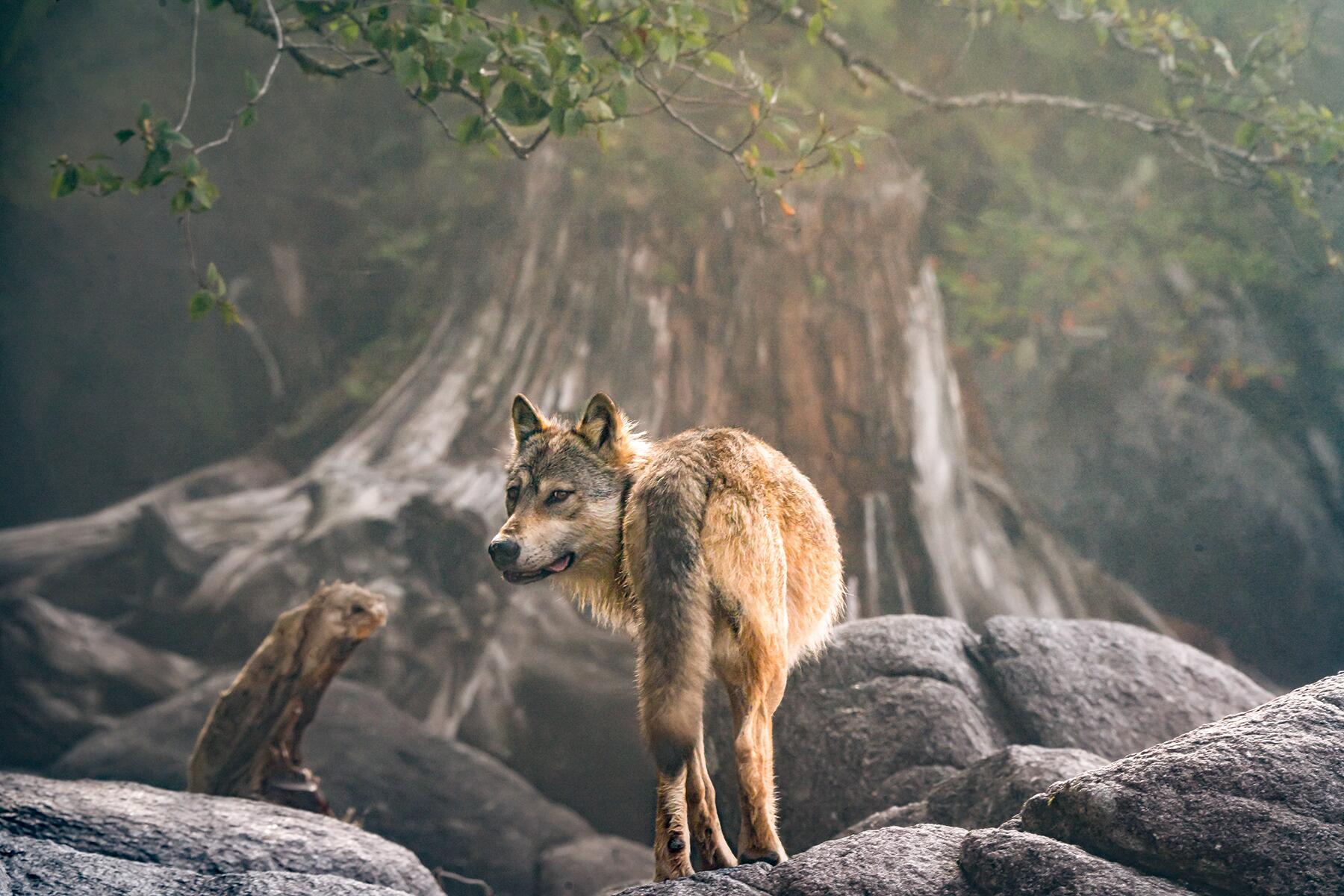
Searching for the spirit bear meant being guided by an Indigenous guide from the local Gitga’at Nation. (Visitors should not visit these traditional territories without permission, so it’s always important to ensure your operator has these relationships.) Expertly escorted, our guide and friend of Maple Leaf Adventures took us to a place where he was seemingly one with the bears. First came the black bears, plucking the salmon out of the river while teaching their cubs how to do the same as they bulked up for the winter hibernation ahead.
And then, after hours of waiting, the star of the show arrived–“Boss,” as named by the Gitga’at. Boss spent what felt like hours staring at the water, then pouncing in it as he attempted to catch salmon to feed on. Although the goal of finding the spirit bear was achieved, it was at this moment where I truly connected the salmon’s journey, its importance, and the circle of life in the Great Bear Rainforest.

The spirit bear, also known as the Kermode bear, is the rarest bear in the world and a subspecies of the black bear found only in this small part of British Columbia. While it is always a treat to see a bear in the wild, on this occasion, I bore witness to two bears fishing for salmon while both staked their territory over each respective pool of fish.
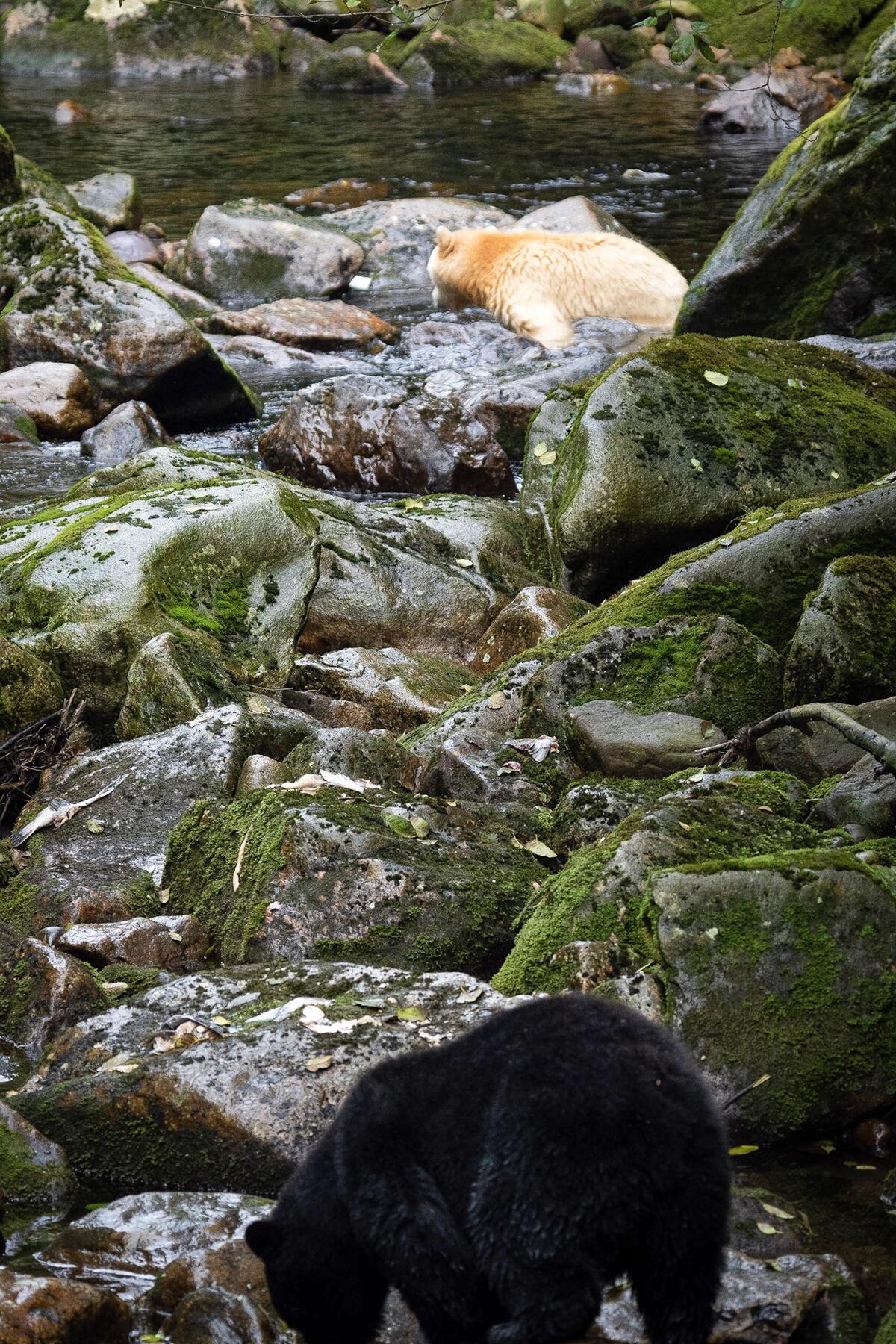 |
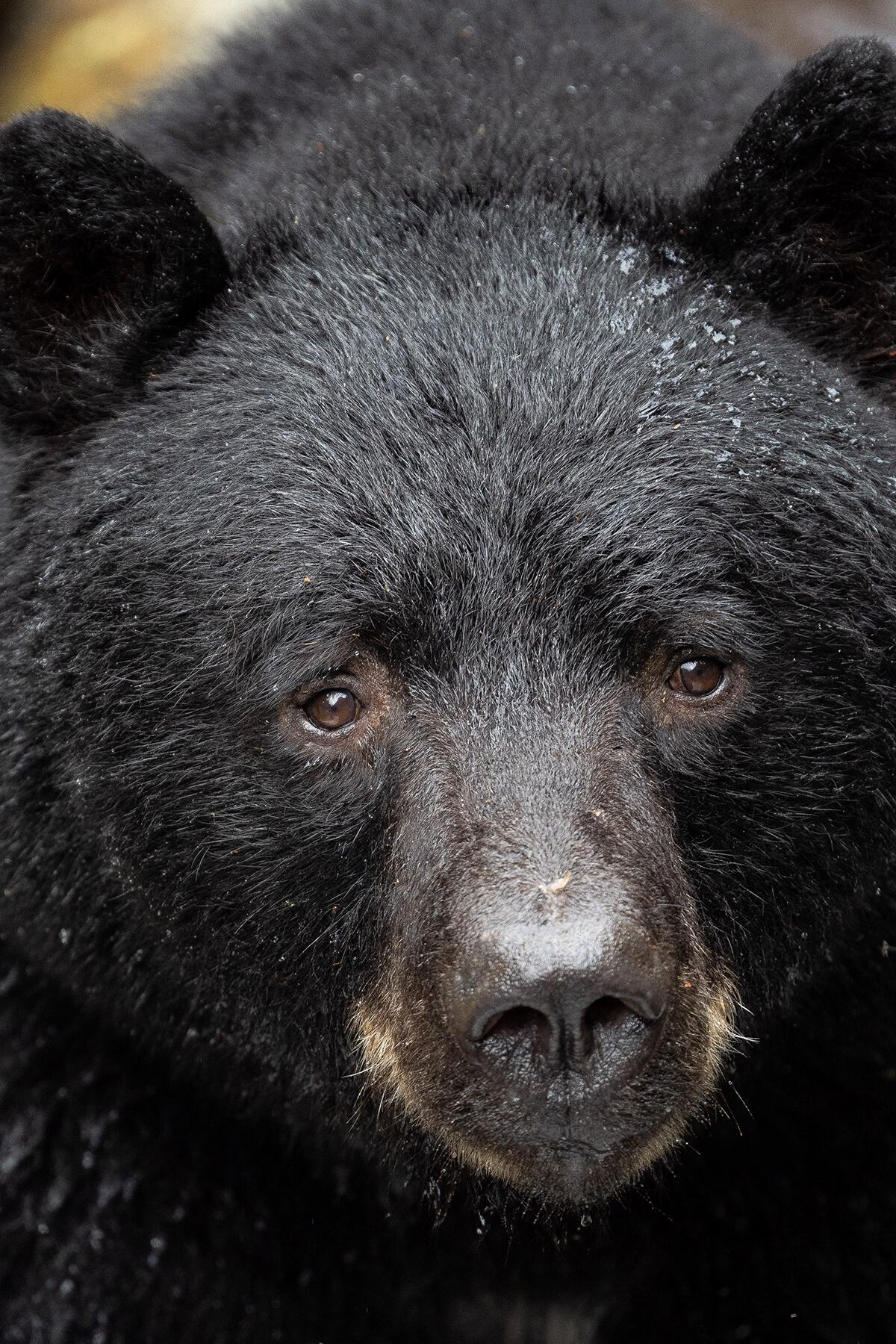 |
Not only had the elusive spirit bear been found, but so had a transformational realization of nature’s intricate workings. This understanding continues with me today, as I set out on a quest of linking travel, our experiences, and their relationship with conservation.


